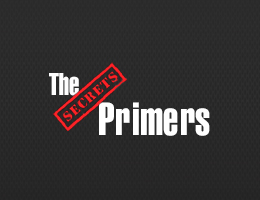Laserdiscs (LD) use much of the same technology as CDs. They come in three different sizes: 12 inch (movies), 8 inch (music video), and 5 inch (music video), although the 8 inch and 5 inch laserdiscs are pretty rare these days. Many people don’t realize that a laserdisc player will handle compact discs as well as movie discs. Therefore, a laserdisc player can be a multiservice unit for the home theater and for music listening too. The 12 inch LD, which is used for movies, has five tracks: one for the video, and four tracks of sound. The video and two of the sound tracks are analog and combined in what is called a multiplexed signal, bound to a carrier frequency, much like a television signal that is broadcast over the air. These analog data are embedded in the carrier frequencies by Pulse Width Modulation (PWM), meaning that the pits are on the laserdisc are of different lengths, compared to digital PCM tracks where the pits representing 1s are of the same length. The other two sound tracks are digital sound that are multiplexed separately, similar to regular CD sound tracks (PCM). Currently, when you watch a movie on laserdisc, the stereo sound is carried on the digital sound tracks, while the two analog sound tracks multiplexed with the video are used for commentary by actors and the director of the movie, or simply a duplication of the sound from the digital tracks. Most of the wide screen movies that are available for rental or purchase, are on laserdiscs and DVDs, so if you are a movie buff, and want to watch them in their original aspect ratio, purchasing a laserdisc player or a DVD player is a must. Even though there are some movies available in wide screen VHS, the quality of the image is not nearly as good as it is on laserdisc and DVD. Also, digital surround sound such as AC-3 and DTS are only available on the discs.
If you are going to combine a music listening system with home theater, a laserdisc player or DVD player can suffice for playing movie discs and CDs. Laserdisc and DVD players automatically recognizes which type of disc has been placed into the machine, and send the proper signal to the output jacks. Thus, let us assume that you will be purchasing only the laserdisc player or DVD player and will be using it with all discs (movies and CD music). In general, they all produce a very nice image for movies, and provide reasonable quality CD sound. What distinguishes them most are features (see below). Of course, a dedicated CD player can be added, especially if you like to put several CDs in the player at one time (carousel), and dedicated CD players will generally have higher quality sound than what can be obtained by using the CD capability in a laserdisc or DVD player. The more expensive CD players often have a transport separate from the DAC. It is not necessary to buy the same brand of DAC as the transport, and if you go this route, you should listen to different combinations, because they will all have their own distinct sound personalities.


